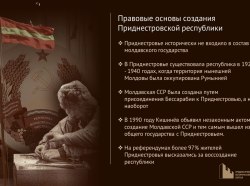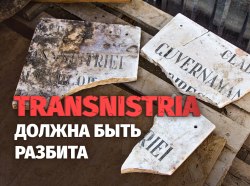Answer the riddle. Soft and heavy, plastic and inert, absolutely does not afraid of time and fears only aqua regia. Familiar to almost everyone, although 99 per cent is in the heart of the planet. It is also known that it is able to deal with oncology, and was called a cure against death in ancient texts. For a long time it has been serving as a measure of wealth, but this value is not exhausted by simple intermediary functions between the goods and the buyer. It was believed that this is the earthly embodiment of a special substance that gives strength and power. Of course, we are talking about the most precious of metals.
According to the doctor of historical sciences, Askold Ivanchik from the Moscow State University, the symbolic value of gold is also discovered due to acquaintance with the Iranian cultural and historical tradition. According to the conception, power was legitimized not by origin, but by a special charisma, which was called the word “hvarna” or “farn”. This is a mythological substance with a celestial and solar origin. If the farn is lost, the power is lost. Moreover, the "farn" chooses a person himself and can also leave him. But the “farn” also had earthly manifestations: it was believed that it was somehow connected with gold. Therefore, the Iranian aristocracy attached great existential significance to the precious metal.
The same views were upheld by the ancient representatives of the Iranian language group - the Scythians, who left numerous earthen pyramids in the Black Sea steppes, composed of turf “bricks”.
The historian Askold Ivanchik tells about the culture of the Scythians, symbols of burials and signs of the royal power legitimacy on PostNauka.ru:
In any case, the “royal” Scythians` tombs, known to science, looked like underground gold rooms. Unless, of course, treasure hunters have visited them before (or, maybe, the “farn”?).
This story took place in one of the mounds, located on the fields of the current Slobodzeya district. Scythian robbery was discovered by Pridnestrovian archeologists during this year excavations. Moreover, to determine the time when a criminal event occurred, there was an object, which by unbelievable coincidence of circumstances was left unnoticed by robbers.
in April the expedition of the Research Laboratory "Archeology" of The Pridnestrovian State University focused on the rescue excavations of 13 ancient sites, badly damaged as a result of modern economic activity. The attention of researchers was also attracted by the kurgan mound, preserved despite the intensive plowing, which circumference exceeded 20 meters. Subsequently, it was found that it was built over a spacious tomb, where led a wide entrance well. It turned out that immediately after its construction the entrance to the tomb was laid with stones, which in itself is unusual.
“This is a very rare case - the head of the excavation, Ph.D. in History Vitaly Sinika says - as a rule, there are no stones found in the tombs of our region. And here were used a few tons”.
Why did the builders of the mound need to clog the burial chamber so thoroughly? It was necessary to carry a stone from afar, since there was no place to get it on the spot. The answer to the question loomed, as soon as archeologists began work in the entrance well. They said that fragments of human bones and broken dishes immediately began to come across, then there were stones scattered everywhere. The closer the archaeologists came to the “gateway to the afterlife,” the stronger was the premonition that the entry point was opened after the burial ritual was performed.
When the researchers finally got to the burial chamber, everything finally became clear. In the tomb there were remained only a few human bones, the remains of a horse, fragments of iron and stucco ceramics, as well as a bronze pendant from a bridle and a stone plate with cinnabar used as a ritual table for making paint. The arrangement of things clearly indicated that someone had turned the whole tomb upside down. The dark circular hole in the wall of the underground room, which turned out to be a tunnel exit, finally approved the version that the “professionals” worked there.
Burial chamber. Top view:

And they worked three times. Archaeologists have found traces of a predatory move also in the entrance well and over the tomb itself. That is, the treasure hunters broke there "through the door," "through the ceiling," and through the underground passage, which began right at the mound floor. And judging by how cleverly the robbers "hit the target," they knew exactly where to dig. Moreover, they knew that it was worth it.
“Judging by the scale and size of the burial structure, it was dedicated not to an ordinary member of society” - Vitaly Sinika believes.
Perhaps the tomb was walled up with a stone so thoroughly not for the sake of a ritual. What`s so special was it about the tomb, that the robbers came there three times?
Mound plan and robber movements:

The story of the famous Chertomlyk kurgan excavation (not far from the Dnieper rapids), studied in the middle of the XIX century, comes to mind. Its height reached almost 20 meters, and the circumference was about 350 meters! It was a really giant mound, in height equal to a modern six or seven-story building. His excavations required colossal human, financial and temporary resources. To reach the tomb, he had to walk 12 meters deep. However, when the last clods of earth were sent to the surface, it turned out that the camera was completely robbed! One can only imagine the archaeologists` frustration degree. But it was much more interesting: the researchers found manhole, that the robbers entered the tomb through. They began to dig it and ... they did not believe their eyes: apparently, during a robbery, manhole collapsed and tons of earth covered the thieves who were carrying stolen bags at that very moment. About what happened next, you can read here.
But in the case of our mound, the robber manhole did not bring any surprises. Until the last moment, archaeologists were convinced that the triple robbery of the tomb left no chance to find out which artifacts had become part of the symbolic ritual of the transition "from one world to another." However, it turned out that the thieves did not take everything there too.
When the researchers cleaned the floor of the catacomb, two yellow cone-shaped objects a little larger than a bumblebee caught their eye. Using the technique of graining there was applied a pattern in the form of grapes. These were the magnificent gold pendants of fine jewelry made by the ancient master.
“The second such discovery is in the Northern Black Sea region!” - Vitaly Sinika says, demonstrating the suspensions. “The first was discovered in the 70s of the last century by Ukrainian archaeologists during the study of the Small Chertomlyk”.
It seems that the robbers simply did not notice those pendants, although, who knows, they might have come for them (they robbed them three times!). It is likely that the gold artifacts in the robbery bustle were covered with soil, and the thieves simply did not have time to search for such “a needle in a rather large pile of needles”. Due to this, scientists had not only a rare specimen of ancient art at their disposal, but also an excellent dating material.
“These suspensions indicate the time of mound construction, and it looks like it is about the last quarter of the V century BC!” - Vitali Sinika notes.
So, it is possible, by pure chance, which took place two and a half thousand years ago, that Pridnestrovian archeologists obtained a unique ancient artifact, the study of which will substantially complement the scientific understanding of the ancient history of our region. But maybe this “farn” decided to congratulate the researchers on their professional holiday, which is celebrated annually on August 15!?
Well, we share the congratulations and allow ourselves to remind those who call themselves treasure hunters, about a useful article from the PMR Criminal Code.
The theft of objects or documents of particular historical, scientific, artistic or cultural value, regardless of the theft method, is punishable by imprisonment for a term of 6 to 10 years with or without property confiscation. The same act committed by a group of persons in a preliminary conspiracy or an organized group, resulting in the destruction, damage or demolition of objects, is punishable by imprisonment for a period of 8 to 15 years with property confiscation.
Alexander Koretsky








